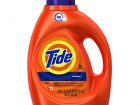I used to love those client meetings where the VP of Marketing in his self-important, authoritarian and demanding manner would remove his eyeglasses and shake them at our team when he explained he wanted to create a marketing campaign that would drive more eyeballs to his company's website. And the site itself would have to be “sticky” and that we really need to “do” something very “viral”.
Ah for all the fodder of the hey day of the internet bubble this lexicon was incubated and bred by those who elevated themselves to experts and pitched and peddled answers and wares to solve the “toughest” advertising, marketing or technology problems. These words and many more like it are all but buried in the backpages of internet style guides, glossaries or history books (are their internet history books yet?).
 So when I followed Casper's link about a British television ad created by Ogilvy & Mather that shows a cute and cuddly tabby cat getting decapitated by the sunroof of a compact Ford I had to laugh. From what I understand the ad never ran on television. Yet somehow this video clipped has leaked its way to the internet and has spread faster than the SARS virus or the proverbial wildfire.
So when I followed Casper's link about a British television ad created by Ogilvy & Mather that shows a cute and cuddly tabby cat getting decapitated by the sunroof of a compact Ford I had to laugh. From what I understand the ad never ran on television. Yet somehow this video clipped has leaked its way to the internet and has spread faster than the SARS virus or the proverbial wildfire.
According to Snopes, which I find to be the definitive squasher of all internet rumor, exposure of virtually all urban legend and internet police of chain email and bogus political rants, Ford was appalled when it found that the ad, “done in poor taste”, had made its way across the globe and back again.
But then again Ford released a statement indicating that the offensive decapitation was computer generated and that “no animals were harmed” during the filming. Like the viral nature of a conspiracy theory du jour, perhaps as one ad industry exec claimed, this was simply no accident. A classic example of “viral marketing” designed to attract sticky eyeballs for commercial purposes. So here I am. Just another drone contributing to Ford's successful effort — or not.
Watch the ad here. And watch the real ad that ran on television in the U.K. here.



